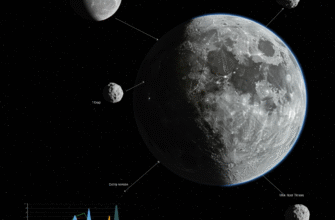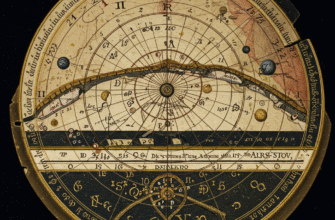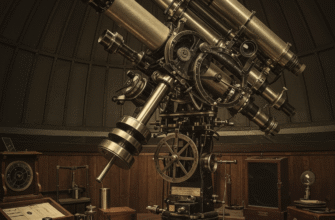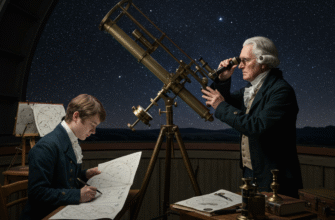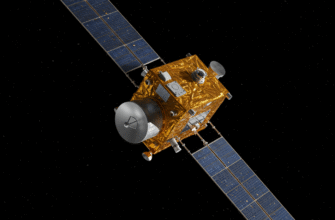The story of the Antikythera Mechanism often begins with its serendipitous discovery by sponge divers off the coast of a Greek island in 1900. What emerged from the depths, initially mistaken for mere corroded bronze, would eventually rewrite our understanding of ancient technology. This intricate device, a shoebox-sized amalgam of gears and dials, was nothing short of an analog computer, designed to predict astronomical phenomena with a precision that would not be matched for over a millennium. As researchers painstakingly deciphered its functions, a natural question arose: who possessed the extraordinary astronomical knowledge and mechanical ingenuity to conceive and construct such a marvel in the 2nd century BC? One name consistently surfaces in this discussion: Hipparchus of Nicaea.
The Astronomical Titan of Antiquity
Hipparchus, active roughly between 190 and 120 BC, stands as perhaps the greatest observational astronomer of the ancient world. While few of his original writings survive directly, his work is extensively quoted and referenced by later scholars like Ptolemy. His contributions were foundational, transforming astronomy from a largely qualitative discipline into a predictive, mathematical science. He wasn’t just an observer; he was a synthesizer, a theorist, and a meticulous cataloger.
Key Achievements of Hipparchus
To understand his potential link to the Antikythera Mechanism, we must first appreciate the breadth and depth of his astronomical breakthroughs:
- The Star Catalog: Hipparchus compiled the first known comprehensive star catalog, meticulously recording the celestial coordinates and apparent brightness of around 850 stars. This wasn’t just a list; it was a snapshot of the heavens, a baseline against which future changes could be measured.
- Discovery of Precession: By comparing his own star observations with those of earlier astronomers (like Timocharis and Aristillus, some 150 years prior), Hipparchus detected a slow, systematic shift in the positions of the stars relative to the equinoxes. This phenomenon, the precession of the equinoxes, was a monumental discovery, demonstrating that the celestial sphere was not immutable.
- Lunar and Solar Theories: He developed remarkably accurate models for the motion of the Moon and Sun. He accounted for the Moon’s irregular velocity (the first lunar anomaly) by proposing an epicyclic or eccentric model. His solar model accurately described the unequal lengths of the seasons, implying the Sun’s apparent speed also varied throughout the year. These models were crucial for predicting solar and lunar positions.
- Eclipse Prediction: Building upon Babylonian records and his own theories, Hipparchus refined methods for predicting solar and lunar eclipses. He understood the conditions required for eclipses and the cyclical patterns, like the Saros cycle, that govern their recurrence.
- Trigonometry: Though the term didn’t exist, Hipparchus is credited with developing the foundations of trigonometry, creating a “table of chords” – essentially a table of sine values – to aid his astronomical calculations. This mathematical toolkit was indispensable for converting observational data into theoretical models.
Hipparchus’s astronomical models, particularly for the Moon and Sun, provided unprecedented predictive power. His work on lunar parallax allowed him to estimate the distance to the Moon with reasonable accuracy. Furthermore, his meticulous approach to observation and mathematical rigor set a new standard for scientific inquiry in the ancient world, profoundly influencing figures like Ptolemy.
Connecting Hipparchus to the Mechanism’s Gears
The Antikythera Mechanism, as revealed by decades of advanced imaging and scholarly analysis, was a complex astronomical calculator. Its front dial likely showed the positions of the Sun and Moon against the zodiac, along with a calendar. The back dials revealed information about lunar cycles, eclipse prediction (Saros and Exeligmos cycles), and possibly the timing of Panhellenic games like the Olympiad.
The parallels between Hipparchus’s known work and the Mechanism’s capabilities are striking, leading many researchers to propose a strong connection, if not direct authorship.
The Lunar Anomaly and Hipparchan Gearing
Perhaps the most compelling piece of evidence lies in the Mechanism’s sophisticated gearing for the Moon. The device employed a remarkable “pin-and-slot” mechanism, where one gear carried a pin that engaged a slot in another gear. This ingenious arrangement caused the driven gear to vary its speed, accurately modeling the Moon’s first anomaly – its apparent speeding up and slowing down as it orbits Earth. This mechanical solution is a direct analogue to the geometric models (epicycles or eccentrics) that Hipparchus is known to have developed for the Moon. It’s difficult to imagine such a specific and complex astronomical correction being implemented without knowledge of the underlying theory, a theory most prominently associated with Hipparchus during that era.
Solar Motion and the Calendar
While the evidence for the solar anomaly’s modeling in the Mechanism is less direct than the lunar, it’s highly probable. Hipparchus had also developed a model for the Sun’s variable apparent speed to explain the unequal lengths of the seasons. A device aiming for accurate solar and lunar positions for eclipse prediction would almost certainly need to account for this. The main front dial showed the Sun’s position in the zodiac, and its accurate tracking would benefit from a Hipparchan-style solar model. The 365-day Egyptian calendar displayed could be adjusted by a fraction of a day each year, hinting at an understanding of the true length of the solar year, a value Hipparchus refined.
Eclipse Prediction Cycles
The rear of the Mechanism featured two large spiral dials. One displayed the 223-month Saros cycle, used for predicting the recurrence patterns of solar and lunar eclipses. The other showed the 19-year Metonic cycle (crucial for intercalating lunar and solar calendars) and the 76-year Callippic cycle (a refinement of the Metonic). It also included an Exeligmos dial, equivalent to three Saros cycles (54 years and 33 days), which helps predict eclipses that occur at roughly the same time of day and geographic longitude. While the Babylonians discovered the Saros cycle, Hipparchus extensively studied and utilized eclipse data. His understanding of these cycles would have been essential for designing or verifying the accuracy of these dials.
It is crucial to state that no surviving ancient text directly names Hipparchus as the designer or builder of the Antikythera Mechanism. The attribution is primarily based on chronological alignment, the advanced astronomical knowledge encoded in the device matching his known expertise, and his association with Rhodes, a potential manufacturing hub for such instruments. The case remains circumstantial, albeit compelling.
The “Argument from Rhodes” and Intellectual Milieu
Hipparchus spent a significant portion of his productive life on the island of Rhodes, which was a major center of learning and technological innovation in the Hellenistic period. Cicero, writing in the 1st century BC, mentions a mechanical sphere created by Posidonius of Rhodes (who lived a generation after Hipparchus) that showed the motions of the Sun, Moon, and five planets. While Cicero’s description is not detailed enough to equate it directly with the Antikythera Mechanism, it points to a tradition of constructing such complex astronomical devices in Rhodes.
It is plausible that Hipparchus, as the leading astronomer of his time, either directly designed the Mechanism, or provided the theoretical framework and calculations for a skilled craftsman or workshop in Rhodes to build it. The level of astronomical sophistication embedded within its gears seems to point to a singular genius, and Hipparchus is the most prominent candidate from that period.
Challenges and Alternative Perspectives
While the Hipparchan connection is strong, it’s not universally accepted as definitive proof of his direct hand in the design. Some scholars suggest that the astronomical knowledge, while advanced, might have been part of a broader tradition, possibly originating from Babylonian sources and developed by a school of astronomers rather than a single individual. Others point out that the Mechanism, while complex, doesn’t seem to incorporate Hipparchus’s most groundbreaking discovery: the precession of the equinoxes. If he designed it, why omit such a significant finding? One answer could be the extreme slowness of precession (about 1 degree every 72 years), making it difficult to model mechanically for practical short-term predictions and perhaps deemed unnecessary for its primary functions.
Furthermore, the specific gear tooth counts and ratios in the Mechanism, while accurately reflecting astronomical cycles, do not always precisely match the parameters Hipparchus is known to have favored in his surviving works (as reported by Ptolemy). These discrepancies could imply a different designer, or perhaps that Hipparchus used slightly different parameters for this specific practical application, or that our knowledge of his parameters is incomplete.
A Legacy Cast in Bronze
Whether Hipparchus was the sole designer, a key consultant, or simply the intellectual giant whose theories made the Antikythera Mechanism possible, his influence is undeniable. The device stands as a testament to the heights reached by Greek astronomical science and mechanical engineering. It demonstrates that the sophisticated astronomical models developed by figures like Hipparchus were not mere theoretical constructs confined to scrolls; they were translated into tangible, working technology.
The Antikythera Mechanism forces us to reconsider the capabilities of ancient scientists and engineers. It embodies a level of scientific understanding and mechanical execution that feels almost anachronistic, a glimpse into a world far more advanced than previously imagined. Hipparchus’s detailed study of lunar and solar motion, his work on eclipse cycles, and his development of mathematical tools were all essential prerequisites for the Mechanism’s existence. Even if the hands that physically crafted the gears remain anonymous, the mind that conceived its astronomical blueprint likely belonged to, or was profoundly shaped by, the work of Hipparchus of Nicaea. The echoes of his genius resonate through its intricate, corroded wheels.
The ongoing research into the Antikythera Mechanism continues to unveil its secrets. Each new discovery refines our understanding of its functions and, by extension, the scientific context in which it was created. While the definitive “smoking gun” linking Hipparchus directly might forever elude us, his shadow looms large over this extraordinary artifact, a silent acknowledgment of his towering contribution to our understanding of the cosmos.


